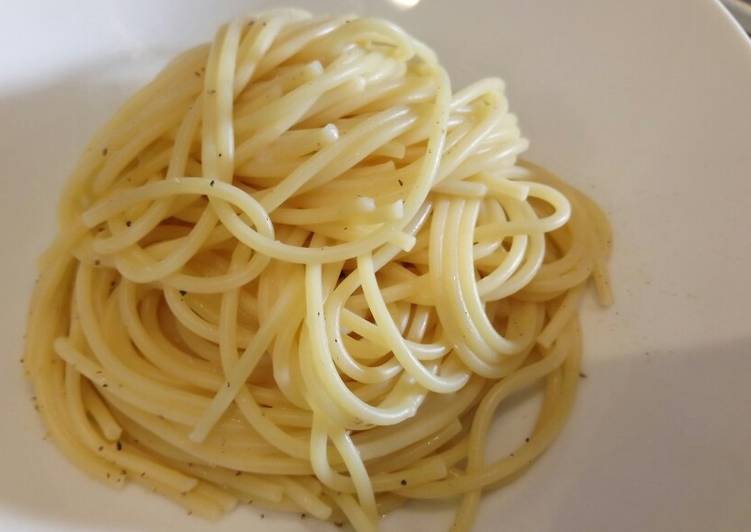Spaghetti Cacio e Pepe. Proseguite mettendo a bollire l'acqua in un tegame (mettetene circa la metà di quanto ne usate di solito per cuocere la pasta, così sarà più ricca di amido) e quando bollirà potete salare a. This Roman "cheese and pepper" spaghetti is a delicious side dish or simple dinner. The addition of garlic changes the dish but it is still tasty.
 And quite frankly that's all that matters. So let people have their cheesy, peppery pasta Quarantine week one and we finally got some spaghetti noodles from a neighbor. We had a large piece of a peppered Tuscan cheese and some quality. You can cook Spaghetti Cacio e Pepe using 5 ingredients and 3 steps. Here is how you cook that.
And quite frankly that's all that matters. So let people have their cheesy, peppery pasta Quarantine week one and we finally got some spaghetti noodles from a neighbor. We had a large piece of a peppered Tuscan cheese and some quality. You can cook Spaghetti Cacio e Pepe using 5 ingredients and 3 steps. Here is how you cook that.
Ingredients of Spaghetti Cacio e Pepe
- Prepare 500 g of spaghetti.
- It's of About 3-4 tablespoons of Pecorino cheese.
- You need of Plenty of black pepper.
- You need Glass of pasta cooking water.
- You need to taste of Salt.
Today at Cucina con noi we'll see how to prepare a popular course from the Rome region: cacio e pepe spaghetti. The classic Roman pasta dish cacio e pepe is as easy to make as it is delicious. If you were to watch a practiced hand make cacio e pepe, you might think the instructions were as simple as this: Cook spaghetti and drain. For centuries, this famous cheesy pasta dish has been a staple in Roman cuisine.
Spaghetti Cacio e Pepe step by step
- Bring a pot of salted water to the boil and cook pasta according to instructions..
- Towards the end of cooking time, remove some cooking water and keep a side in a glass or cup. Drain pasta al dente and put back in the pot. Add the water and cheese.
- Mix it all up well for 1 min. Add a good amount of black pepper. Serve 😁.
It is traditionally made with thick spaghetti (traditionally bucatini), Pecorino cheese (or you could sub in Parmesan). Cacio e pepe (Italian pronunciation: [kaˈtʃo e ˈpeːpe]) is a pasta dish from modern Roman cuisine. "Cacio e pepe" means "cheese and pepper" in several central Italian dialects. Spaghetti with Oil and Garlic (Aglio e Olio). Cacio e pepe literally translates to "cheese and pepper," and while those are the prominent flavors here, this dish is SO much more. Cook your pasta—we'd recommend spaghetti, bucatini, or another long, thin noodle—until al dente in rapidly boiling, salted water.




0 komentar
Author
d'admin